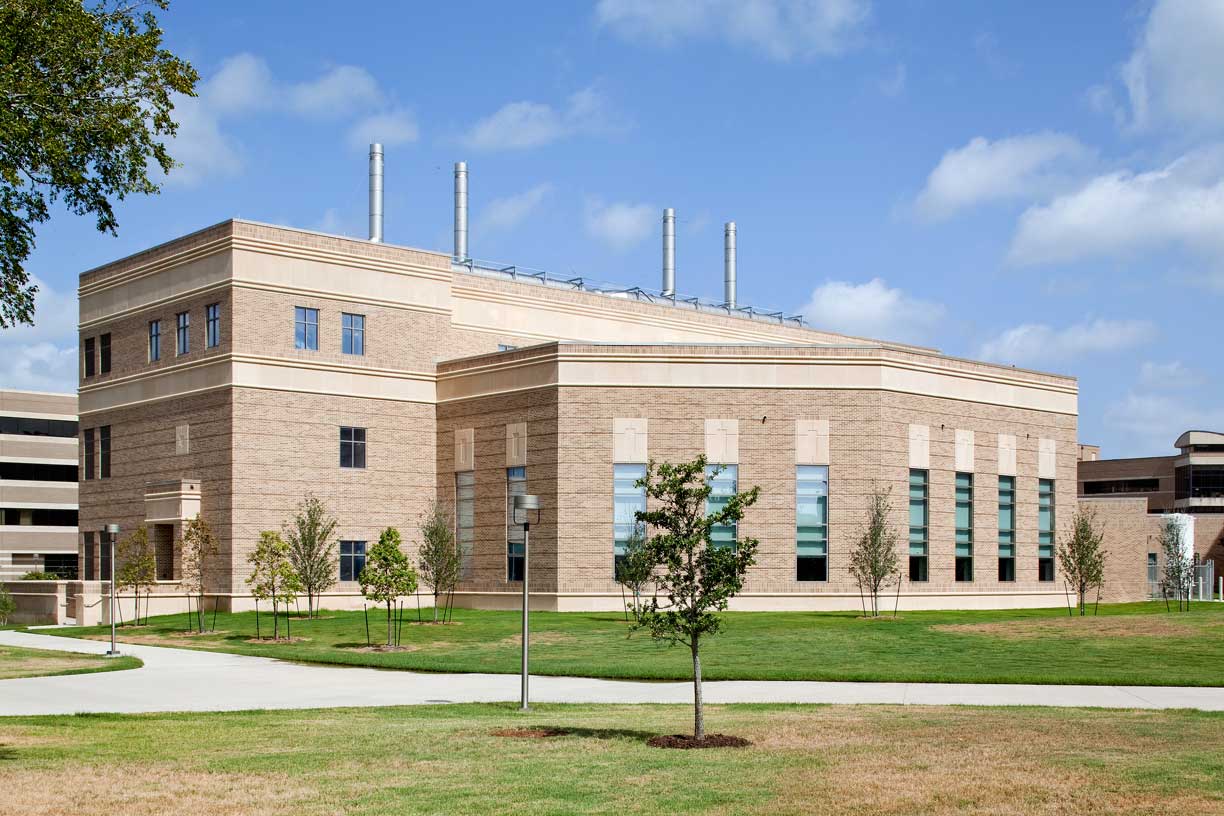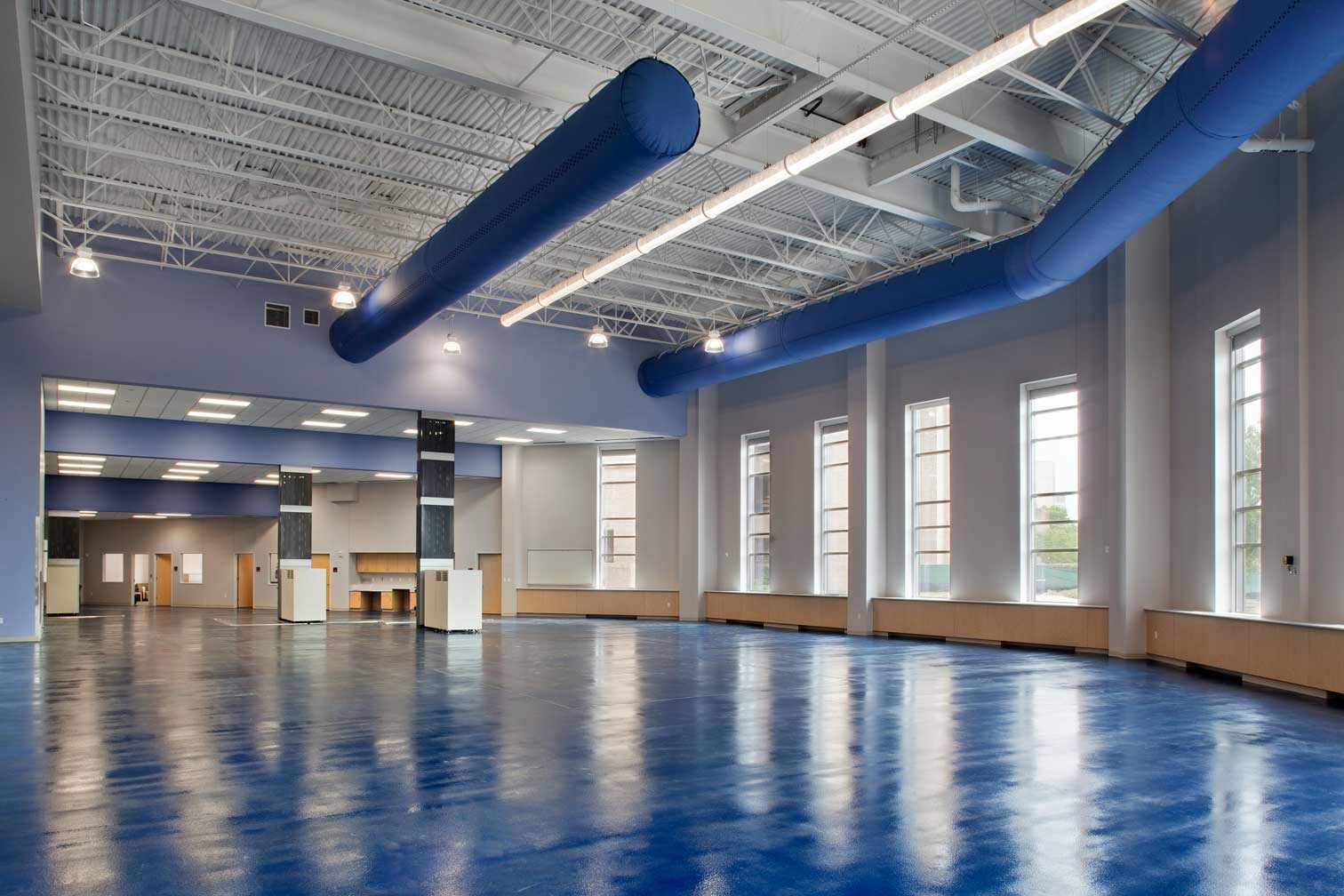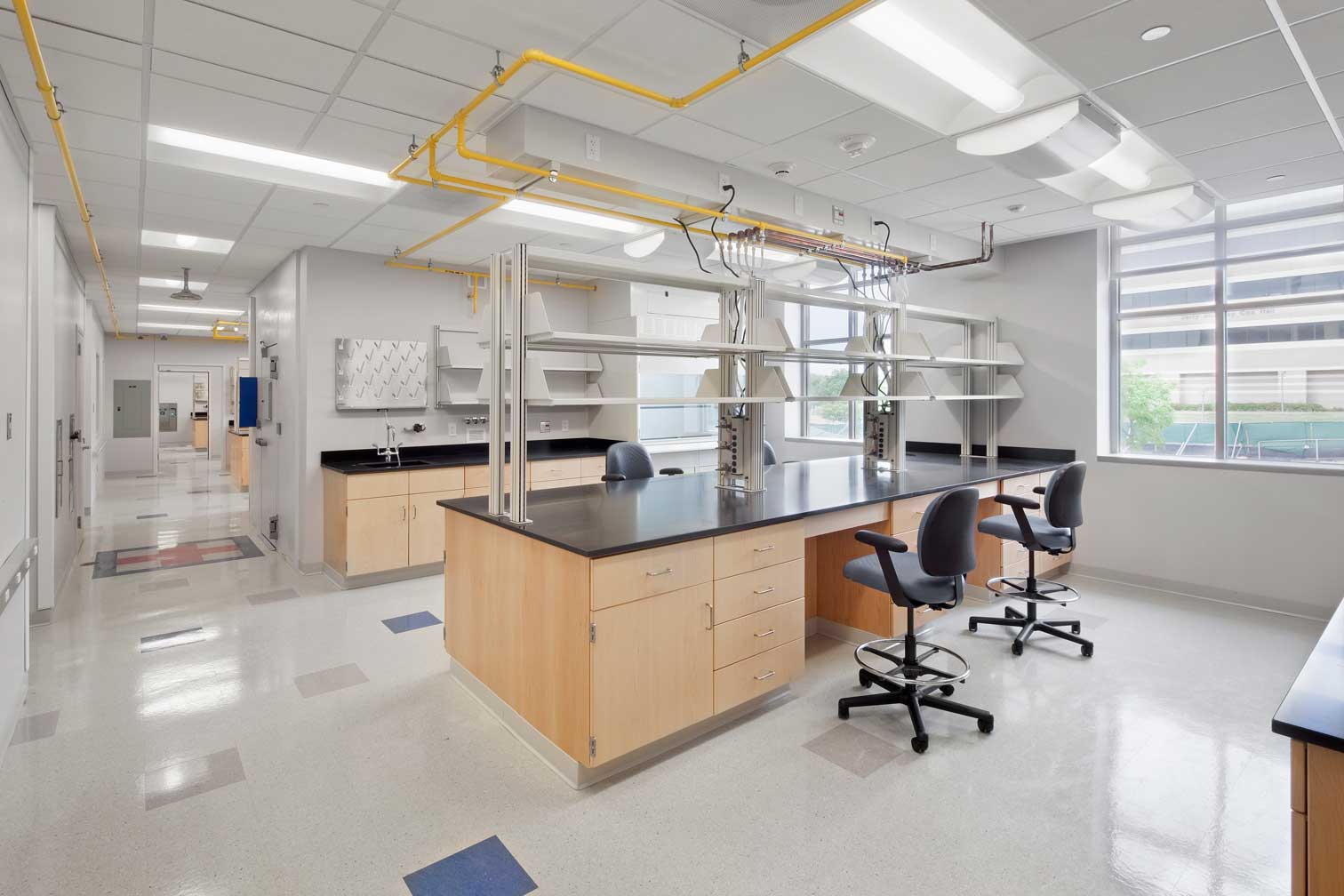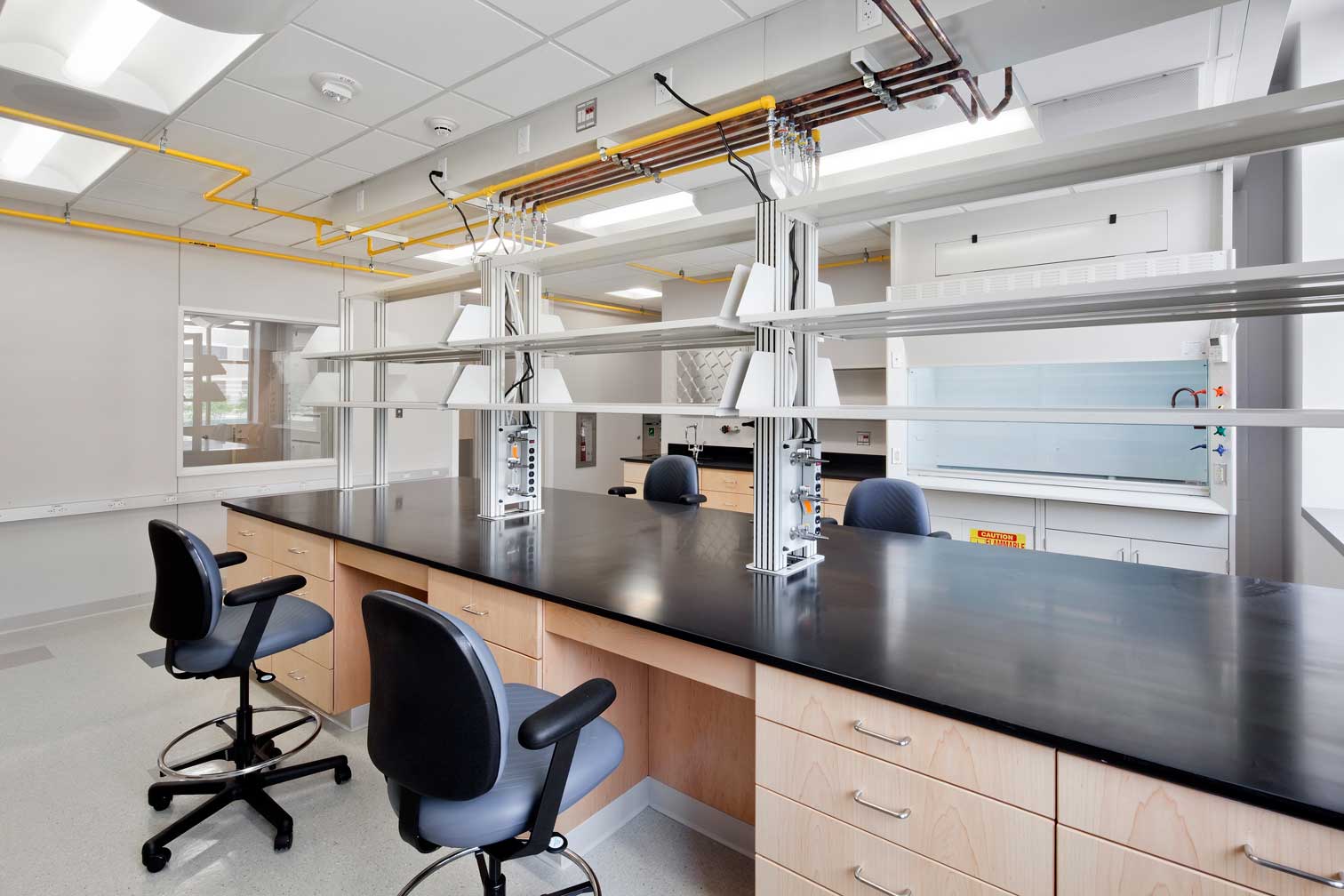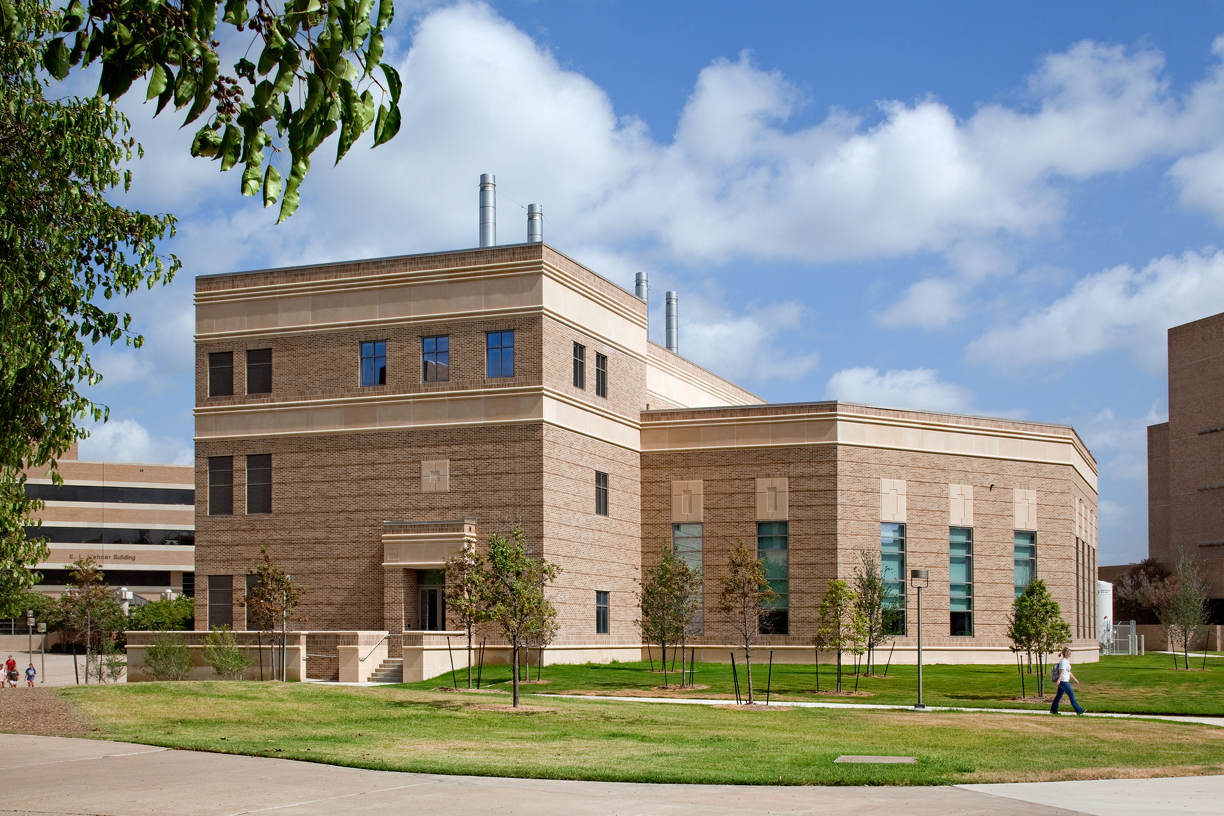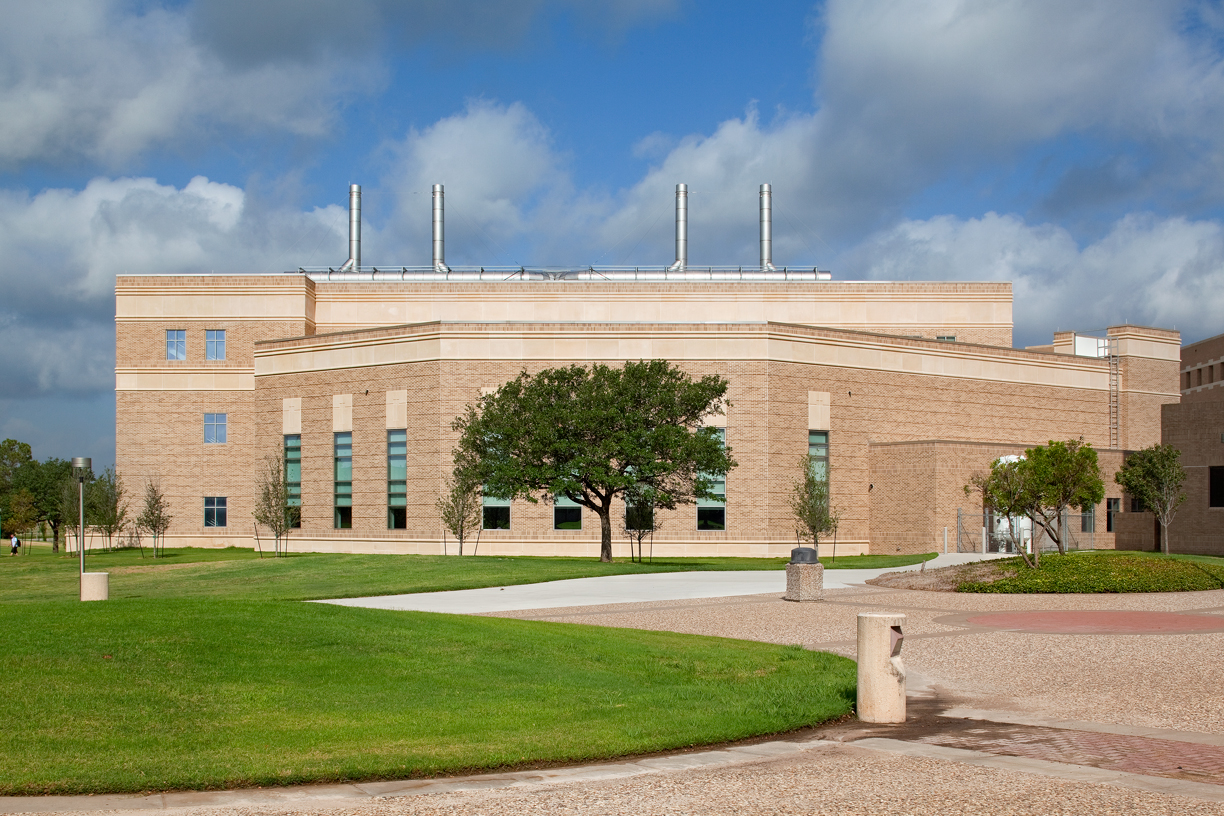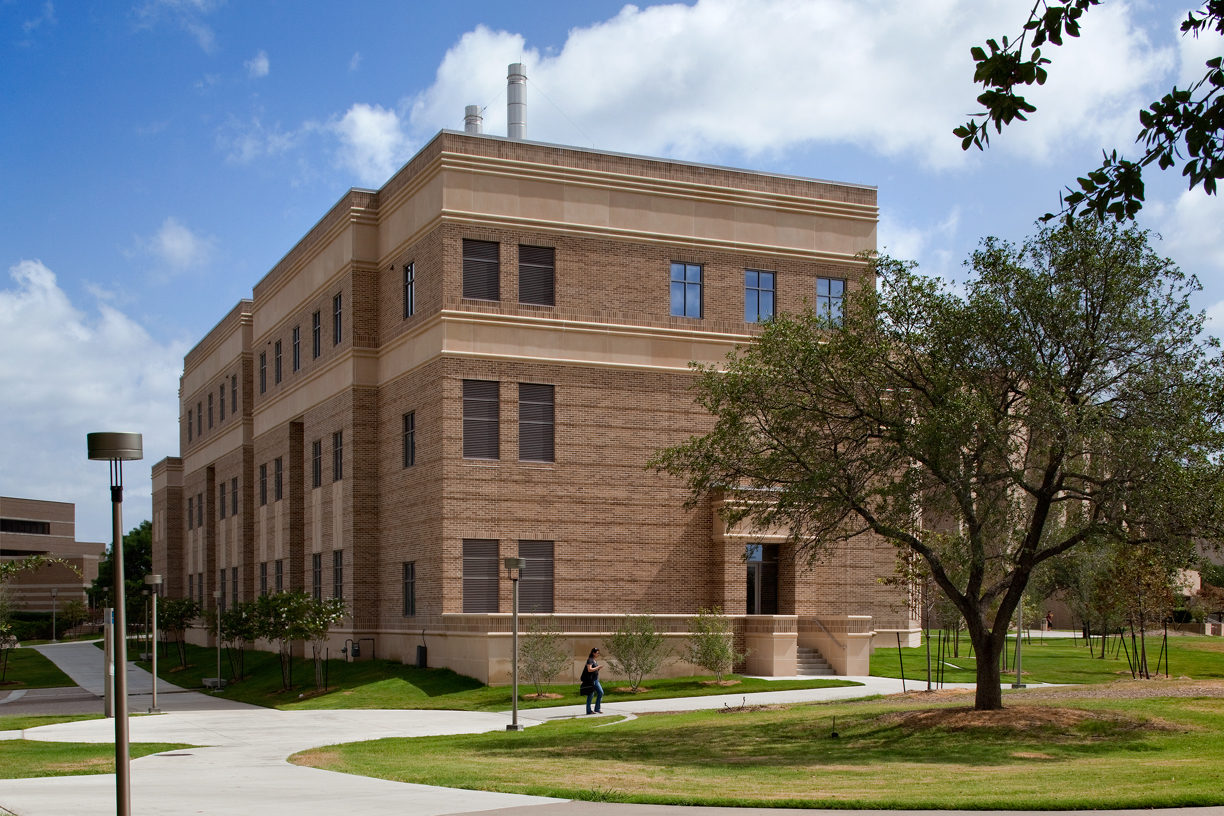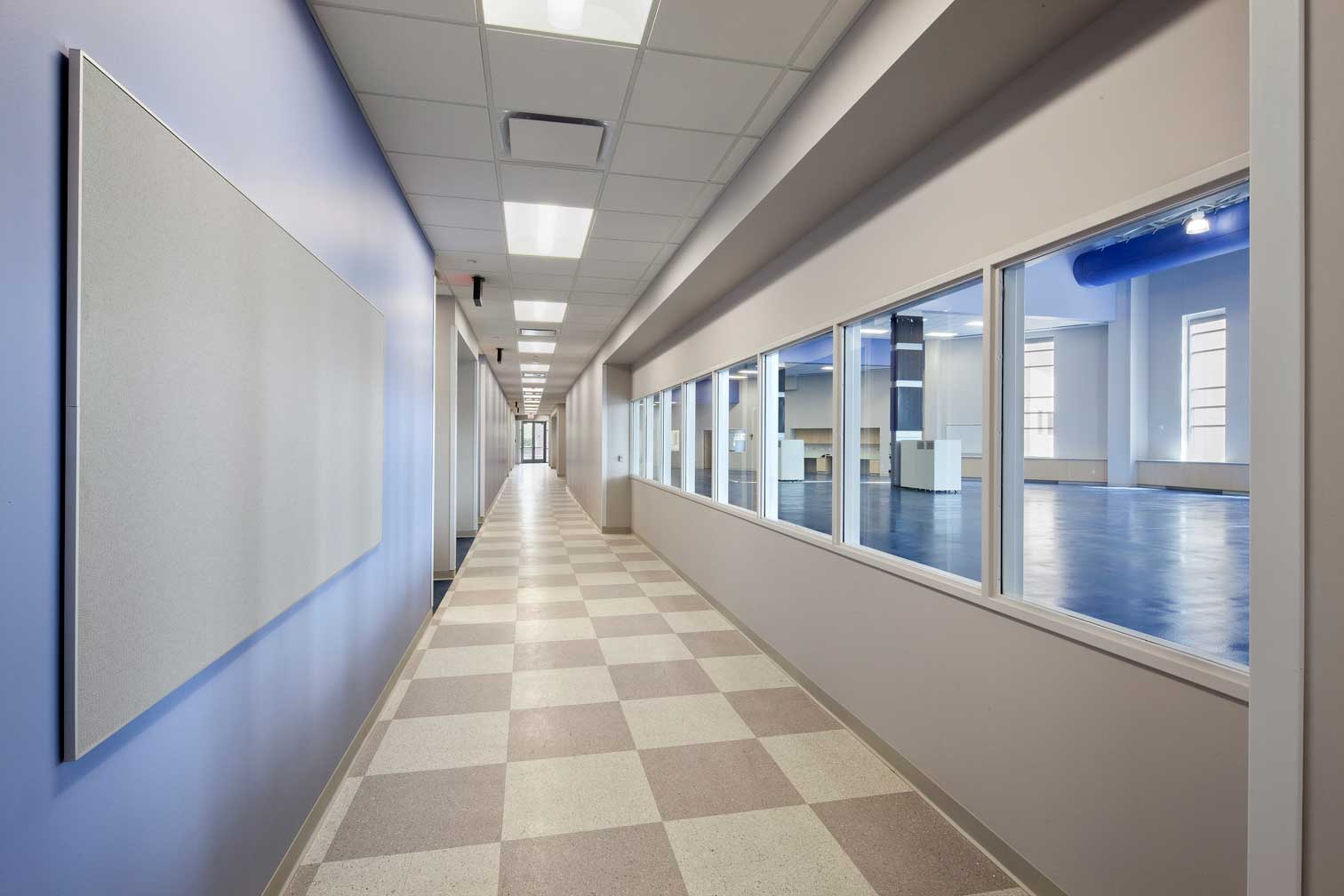Nuclear Magnetic Resonance (NMR) spectroscopy has become a core technology in basic and applied research in the molecular life sciences and a cornerstone of structural biology. Texas A&M University (TAMU) identified structural biology as a signature program. This LEED® Gold certified world-class facility allows TAMU to become a world renowned leader in bimolecular NMR. The new addition, houses 6 pieces of equipment with the 900 MHz instrument as the cornerstone, is one of the largest in the world. The location for the new NMR facility created physical proximity and programmatic partnerships between the Department of Biochemistry and Biophysics and The Texas A&M University System Health Science Center College of Medicine, and other groups in structural and computational biology. This facility enhanced the collective visibility of all structural biology-based initiatives on campus.
The project as originally programmed was a single story building of approximately 20,000 SF. The initial estimated construction budget was approximately $4 Million. During the early design phases, the owner decided to increase the program to include two additional floors of lab space. This decision increased the projects overall sq. footage by 87% to a new total of approximately 37,500 SF.
The building was designed with sustainable features to minimize environmental damage caused by its construction, and to minimize operational energy use. The use of natural light and access to views was included wherever possible.
To achieve LEED Gold accreditation, the building was designed with sustainable features to minimize environmental damage caused by its construction, and to minimize operational energy use. The use of natural light and access to views was included wherever possible.

